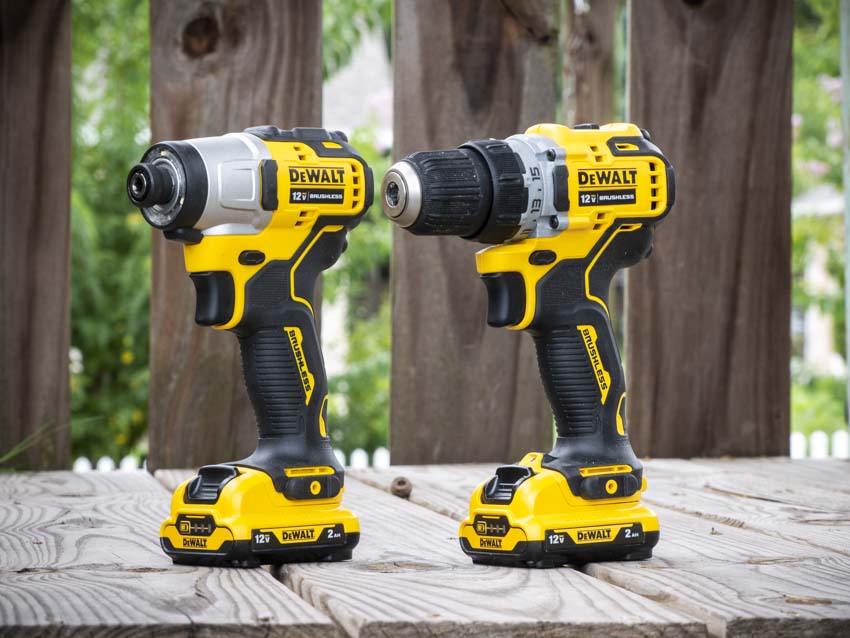Pop quiz, hotshot: What are the major differences between an impact driver and a hammer drill? If you’re stumped, you’re not alone. The answer: mechanisms and applications. A hammer drill uses a high-speed tapping motion to help drill through concrete or masonry while an impact driver features an anvil that strikes rotationally to aid when driving large and small screws.
Having used dozens of these tools over the years, we can demonstrate the differences fairly easily. In the process, I hope to help you understand how the tools differ, the applications they work best at, and how you can know which to grab for your application. And, yes, I recommend having both tools!
Table of Contents
- Impact Driver vs Hammer Drill Mechanisms
- Feature Differences Between an Impact Driver and Hammer Drill
- Hammer Drill vs Impact Driver Testing
- When to Use an Impact Driver vs a Hammer Drill
- Impact Driver Applications
- Hammer Drill Applications
- The Bottom Line
- Bonus: Upgrading Your Hammer Drill to a Rotary Hammer
Impact Driver vs Hammer Drill Mechanisms
Impact drivers and hammer drills may both spin various bits, but they do so in very different ways. Not only do impact drivers favor a different shank style for bits, but the tool has a very different way of approaching how it gets work done.
The other key difference in the mechanisms shows up in the length of the tool. Due to a hammer drill having a clutch and multiple (often mechanical) speed settings, it sports a much longer length. An impact driver, with its “one-size-fits-all” hex check, shaves off the length and presents as a much more compact tool to use.
Impact Driver – Rotational Impacts
A hammer and anvil design helps impact drivers accomplish their tasks. Most impacts have two hammers although some have three. As the tool’s motor turns a spring-loaded hammer plate, the spring compresses, and the hammer and anvil plates push apart. For a fraction of a second, there is space between the plates and potential energy in the spring.
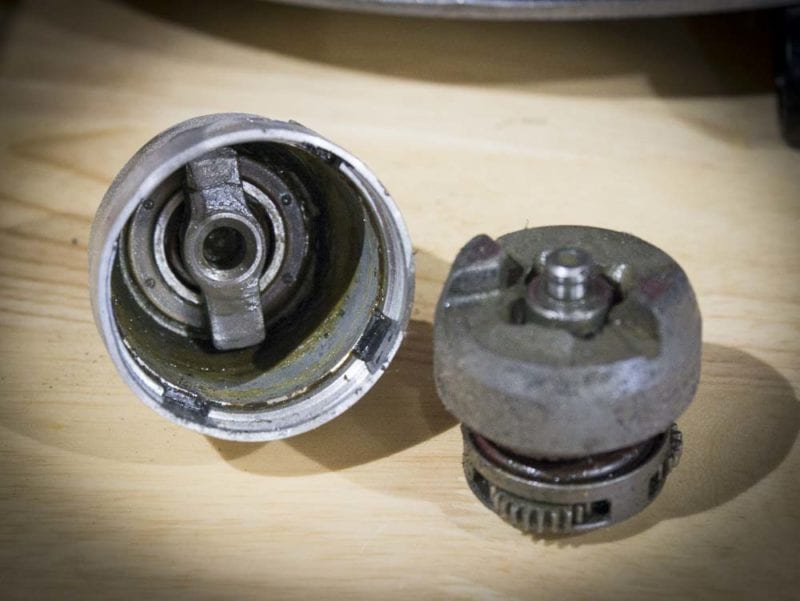
In this space, the hammer and anvil plates slip past one another only to slam together again forcefully by the spring’s kinetic energy. This creates a great deal of torque (and a little downward force) as the hammers hit the anvils and transfer the energy through the bit to turn the fastener. The impact driver repeats this process rapidly. We look to the tool’s impacts per minute (IPM) or blows per minute (BPM) for a measure of impact rate in numbers that get as high as 4000 IPM in the best impact drivers.
Hammer Drill – High-Speed Tapping
To an extent, the hammer drill’s mechanism is a difference of degree rather than kind. However, the difference results in forward force and less torque than an impact driver.
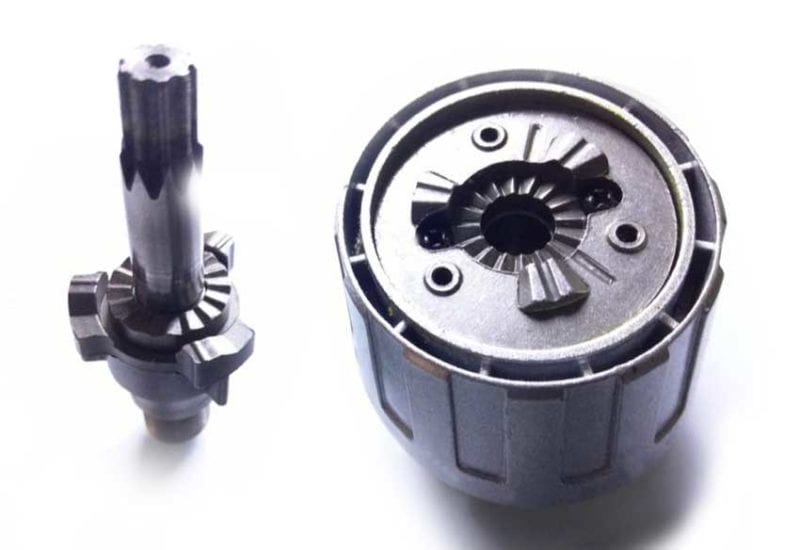
The hammer drill also uses two plates but trades out the hammer and anvil design for a mechanism that looks like the way two checkers stack together (king me!).
There are some other excellent images here.
As you start to drill, the teeth slip up and over the opposite teeth or bearings to create a motion that pushes forward and slips back. This transfers through the bit into a chipping function while the plates, interlocking for a fraction of a second before separating apart again, quickly turn the bit.
It’s common for the impact rate of a hammer drill to be tens of thousands of BPM. As a point of preference—we prefer IPM for impact drivers and BPM for hammer drills. Some tools easily exceed 30,000 BPM.
Feature Differences Between an Impact Driver and Hammer Drill
I’m not going to go over every little feature between the two tools. However, some key differences really make a difference in what it’s like to use them.
Noise Levels and Output
There’s no getting around the fact that impact tools are louder than drills. Indoors, I measured our impact driver right at 100 decibels while the drill was just 88. 12 decibels is a huge difference: more than twice as loud and 16 times the sound pressure level. If you want the benefits of an impact driver without as much sound, consider a hydraulic (oil impulse) impact driver.
Size and Weight
If you don’t mind wearing some hearing protection, your impact driver is usually smaller and lighter than your hammer drill. When we’re talking about heavy-duty hammer drills, it’s a massive difference you can easily see and feel.
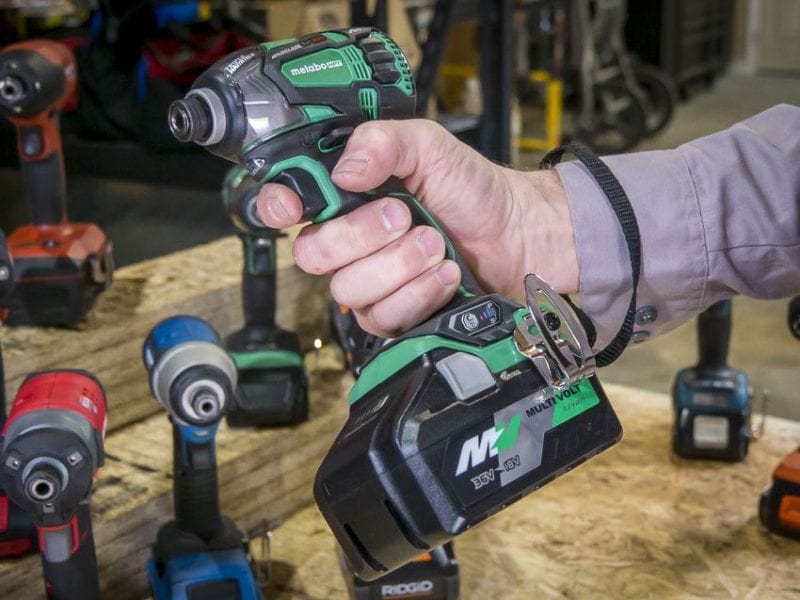
That changes as you shift to compact hammer drills, though. The impact driver is usually still more compact by quite a bit, but the gap between the weights shrinks. Your impact driver is typically the lighter of the two, though.
That can change when you’re looking at value brands. Some popular Prosumer brands, like Ryobi, have bulkier impact drivers and the size/weight difference is much closer.
Chuck
An impact driver’s 1/4″ hex collet only accepts 1/4″ hex shank bits. However, it’s incredibly easy and quick to change them out. Some offer one-hand bit insertion and a spring ejection.
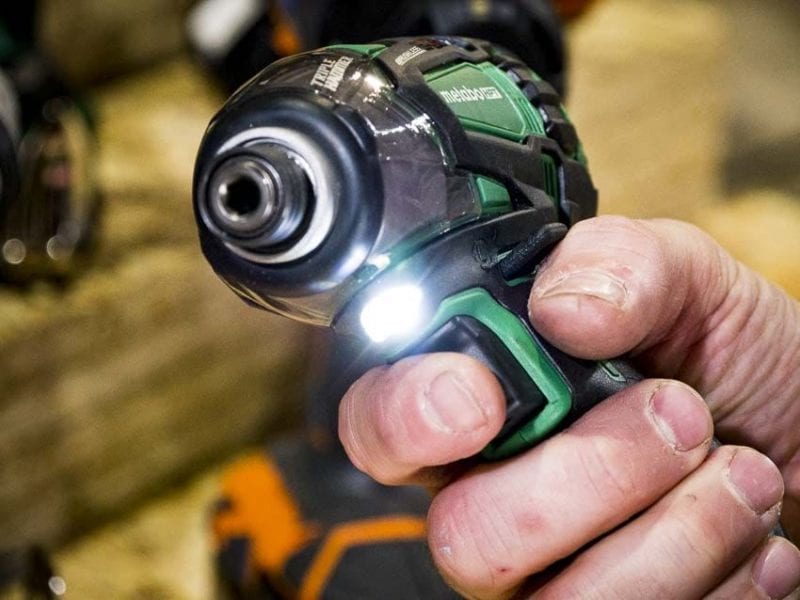
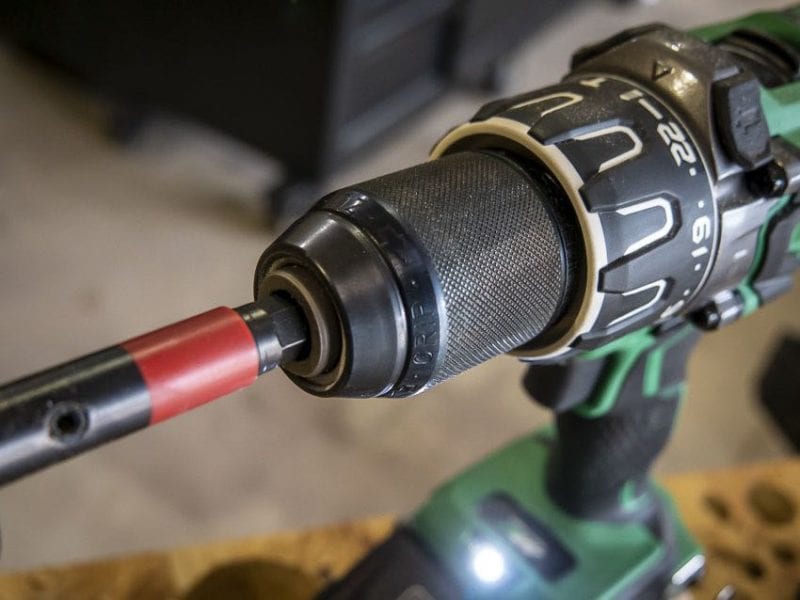
Hammer drills have a 1/2″ ratcheting chuck (3/8″ on smaller models) and accept a wide range of bit diameters. It takes much longer to install or remove them, though. Fortunately, most handheld models are now keyless chucks, simplifying the process compared to your grandfather’s drill.
Mode Changes
Both tools can have manual or electronic speed control switches. Electronic controls are more prevalent in models that have brushless motors and a few models also offer smart custom controls.
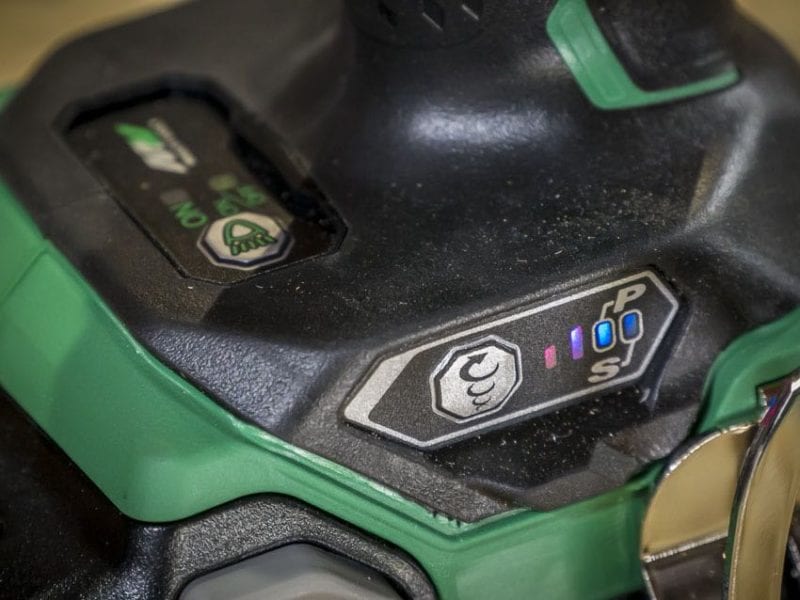
Impact drivers can be single-speed on more budget-friendly models, with 2-speed and 3-speed models being more common on the Pro end. Some models integrate preset assist modes that can help with driving self-tapping screws, offer a controlled start, auto-stop in reverse, and/or more.
All but the most basic drills have 2 speeds with a few models offering 3 or 4. To switch modes between driving, drilling, and hammer drilling, you typically twist the collar to the mode you want to be in. Some put the drill’s clutch on the same collar while others separate them.
Bind-Up Protection
Some hammer drills include a clutch system that senses when your bit binds and automatically shuts the motor down much faster than you can react and let go of the trigger. It helps prevent injuries and is a feature we highly recommend on your heavy-duty drill. It’s available on drills from Milwaukee, Bosch, Flex, and Metabo HPT among others.
Impact drivers and impact wrenches don’t need one. Even when the rotation comes to a complete stop, the hammer keeps hitting the anvil and slipping back over. Even though an impact driver’s impacts transfer vibration to your hands, it makes metal fastening much easier to deal with than a drill. It’s one reason that you might choose an impact driver for larger fasteners like our ledger screws even though a drill might be faster.
LED Lights
Many hammer drills and impact drivers have a similar light placement just above the battery or just below the chuck. The impact driver’s collet makes it much easier to place 2 or 3 LEDs around the chuck, nearly eliminating shadows from every direction. A few drills also pull it off, but it’s much less common.
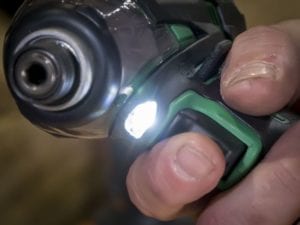
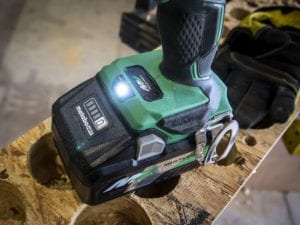
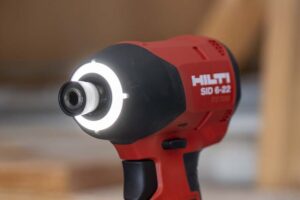
Hammer Drill vs Impact Driver Testing
I tested a Metabo HPT 36V hammer drill vs the triple hammer impact driver in a battery of tests. I factored in and tested everything from speed to power to ergonomics. After hours of testing, I drew some pretty firm conclusions.
Driving Speed: 1/4″ Ledger Screws
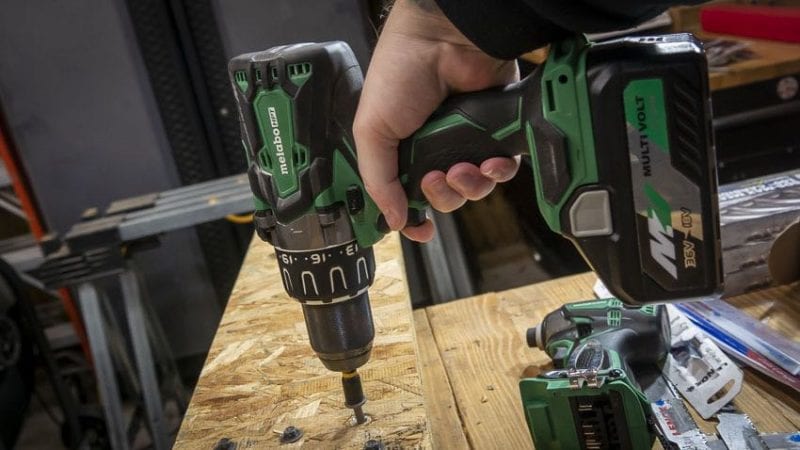
When you look at the no-load speeds of hammer drills and impact drivers, the impact is much faster. It’s very common to see speeds of 3,000 RPM or higher whereas hammer drills are typically 2,000-ish. With a light load, such as drywall screws, the impact driver is usually faster.
But what happens when you put a bigger load on it? Using 1/4″ ledger screws, our hammer drill was faster by a significant margin. It took less than a second to fully drive each one. On the other hand, the impact driver averaged about 3 seconds.
- Winner: Hammer Drill
Drilling Speed: 1/2″ Twist Bit
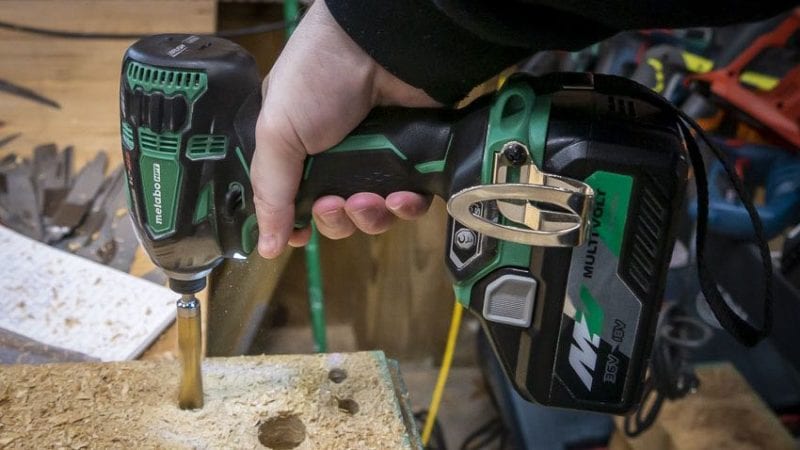
With a 1/2″ Milwaukee Red Helix titanium twist bit, our impact driver didn’t need to do a ton of impacting and it was able to keep its RPMs high. That gave it about a 1.5-second advantage drilling through 5 sheets of stacked OSB.
- Winner: Impact Driver
Drilling Speed: 1″ Spade Bit
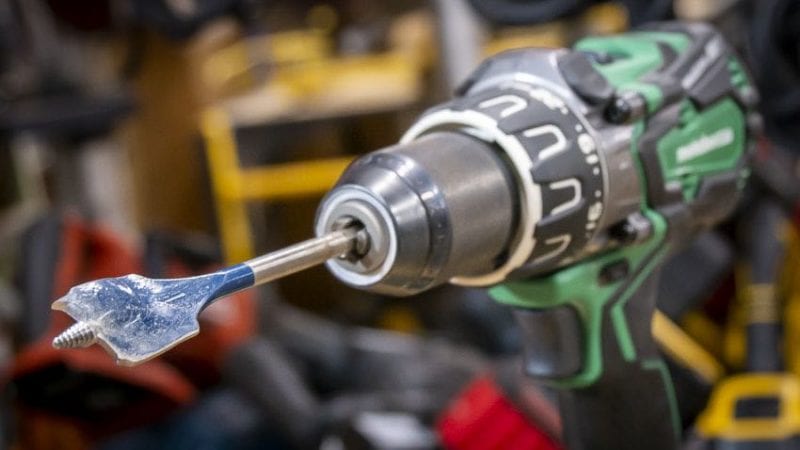
Moving to a 1″ Bosch Daredevil spade bit meant both tools had a lot more material to remove. Here, the hammer drill’s sustained torque took over, giving it an average lead of just under 4 seconds.
- Verdict: Hammer Drill
Drilling Speed: 1/4″ Concrete Bit
Switching to a 1/4″ Bosch Daredevil Multipurpose bit and a section of concrete, I got a surprise result. The hammer drill’s chipping action should have given it higher drilling speeds in concrete, but these two tools were almost identical in their average speeds.
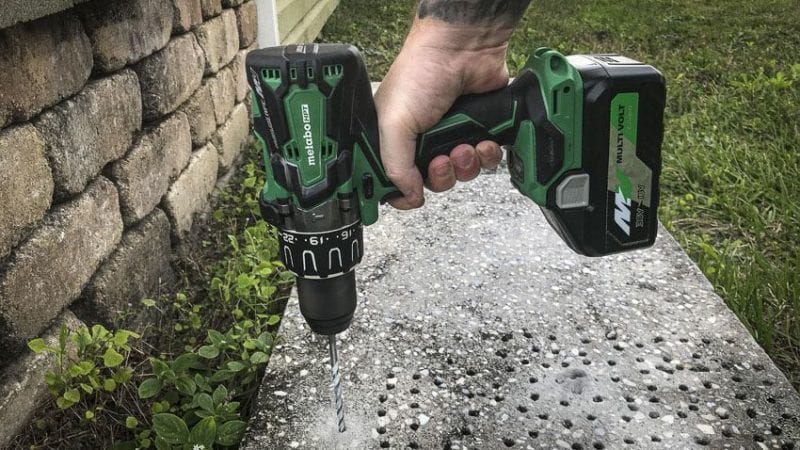
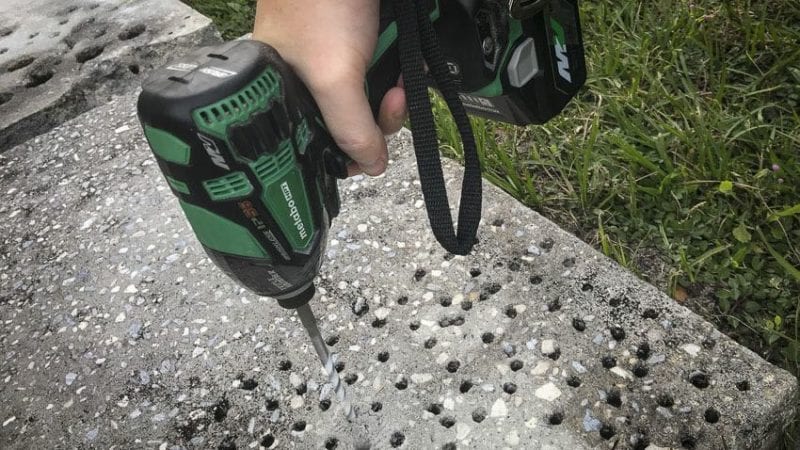
You can make the argument that the hammer drill would begin to build a lead with larger bits, and there’s something to be said about that. However, I recommend moving to a rotary hammer at that point if you have access to one.
- Winner: Tie
Hole Saws, Self-Feed Bits, and Auger Bits
Where the hammer drill wins it for drilling is with some of the other types of bits. Hole saws, self-feed bits, auger bits, and others don’t come with a 1/4″ hex shank. For that matter, not every twist bit, spade bit, or concrete bit does, either.
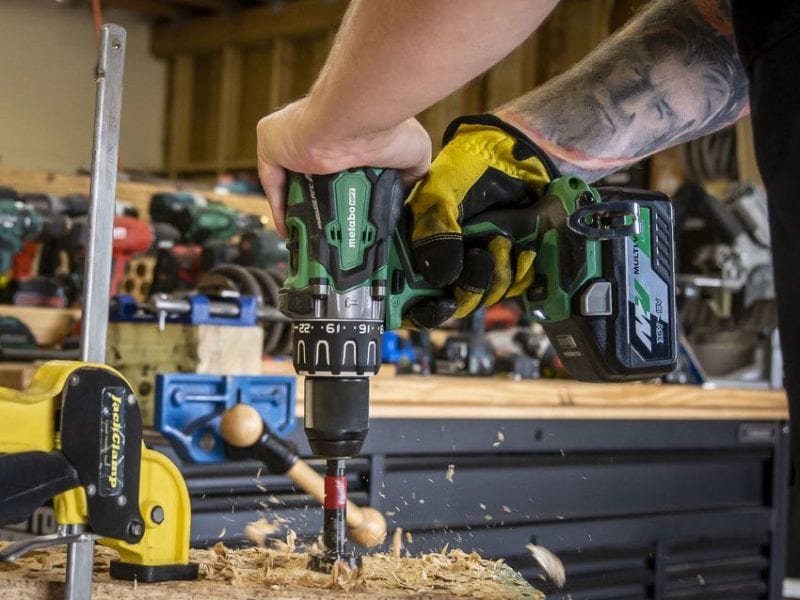
That means you can’t use a full range of drill bits in an impact driver and you need a hammer drill or drill driver for at least some of your work.
- Winner: Hammer Drill
When to Use an Impact Driver vs a Hammer Drill
While you can certainly use these tools interchangeably on many tasks, not all are equally beneficial. For one, impact drivers tackle high-torque applications with aplomb. You can sink very long ledger screws and lag bolts without feeling the reactive inertial forces in your arm. A hammer drill, on the other hand, makes a much better tool for drilling large-diameter holes in wood. It also excels at light-duty concrete drilling.
Impact Driver Applications
The impact driver’s mechanism creates rotational impacts that are excellent for driving screws of all kinds and hex bolts. The impulsing torque can drive and remove tough fasteners when the static torque of a drill would cause it to cam out or simply stop altogether.
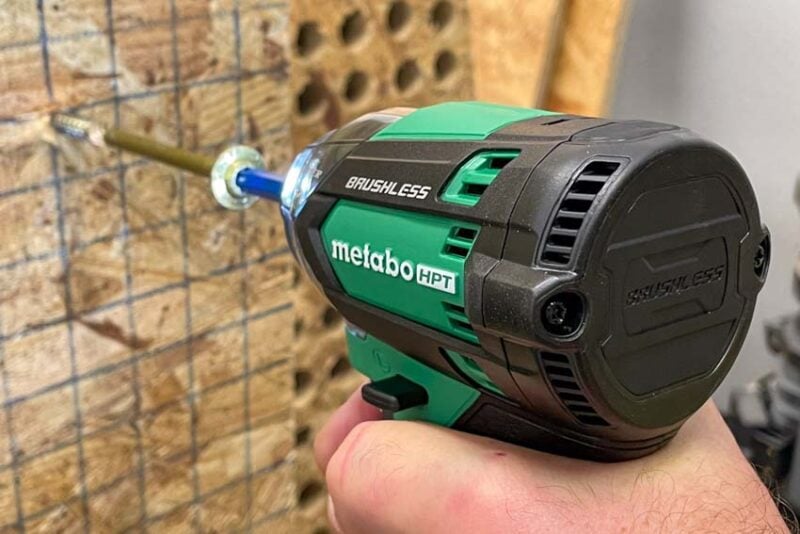
You can also use an impact driver to drill with a hex shank bit but it’s not optimal. The form factor of the stubby impact driver differs enough from a hammer drill (which looks like a regular drill/driver) that you can easily tell the difference.
When you reach the limits of an impact driver, you step up to an impact wrench.
Impact drivers work well for:
- Installing ledger screws and lag bolts
- Driving screws into soft materials
- Driving screws into metal
- Light-duty drilling tasks in wood or metal
Hammer Drill Applications
Hammer drills are the right tool for drilling into masonry (brick, stone, block, concrete) to set anchors and create holes for outlet boxes. With a masonry bit, the hammer drill chips as it turns to push through the material. It’s more compact and lightweight design compared to a rotary hammer makes it a good choice for drilling holes up to 1/2″ or so in masonry, but it doesn’t include dust collection to keep you from breathing in silica dust.
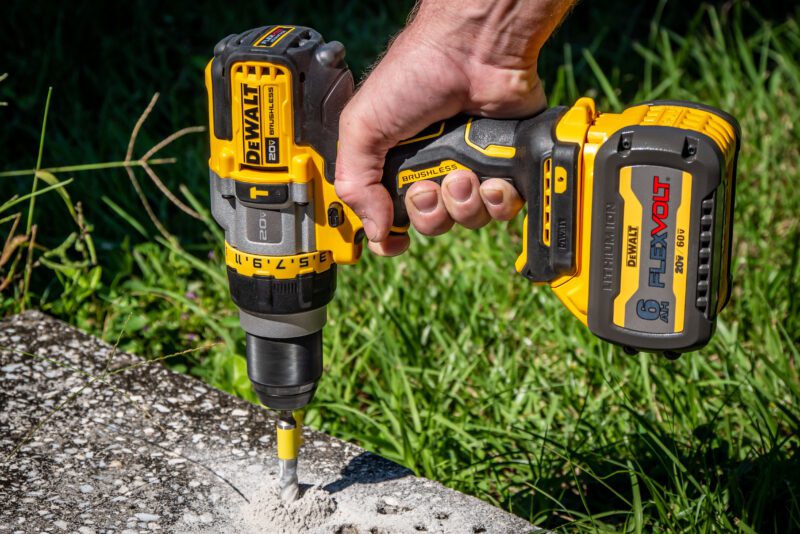
A traditional hammer drill is not the right tool for driving screws. As we just mentioned, hammer drills often look just like a traditional drill. However, most modern cordless hammer drills let you select between drill, drive, and hammer drill modes so you can do all three functions with one tool.
Hammer drills work well for:
- Driving screws into soft materials (particularly due to their clutch settings)
- Drilling small or large diameter holes into wood
- Drilling into soft or hard metals
- Light-duty concrete drilling
The Bottom Line
The big takeaway for me is that drills have the capability of fastening more quickly than impact drivers in the right applications and impact drivers are far more capable at drilling than you might think.
I still prefer having both tools, with the majority of fastening being done by an impact driver and the majority of drilling going to the hammer drill. If you absolutely have to pick just one, grab a hammer drill for its wider range of accessory compatibility.
My conclusions are somewhat relative, though. If I used a compact hammer drill instead of a heavy-duty model, some of the results would change. It’s something to keep in mind if you’re looking for a hammer drill that’s on the lighter side.
Bonus: Upgrading Your Hammer Drill to a Rotary Hammer
When you get to the limit of a hammer drill, it’s time to step up to a rotary hammer. People sometimes confuse a hammer drill and a rotary hammer, even using the name rotary hammer drill. It’s true that a rotary hammer is also for masonry, but it is larger, used for bigger work, and employs a different mechanism: a piston and air pressure.
If you find yourself drilling regularly (and taking a lot of time to do it) a rotary hammer does the job more quickly. With the properly-sized tool, it also lets you drill larger-diameter holes than you would (practically) be able to with a hammer drill. Rotary hammers use proprietary bits—so keep that in mind before upgrading.

